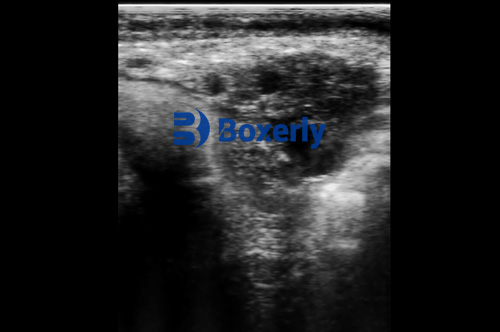In the world of cattle farming, reproductive efficiency is directly tied to profitability. Pregnancy diagnosis plays a crucial role in managing herd productivity. Ultrasound imaging, a standard veterinary diagnostic tool, is now widely used to detect pregnancy and assess fetal viability in cows. Însă, concerns occasionally arise among farmers: can ultrasound examination during early pregnancy lead to miscarriage or abortion in cows?
This article addresses this concern, drawing on scientific research, veterinary best practices, and field experiences. We aim to clarify whether ultrasound, when used for reproductive diagnosis, poses any risk to fetal health in cattle—and if so, under what circumstances.
Understanding Bovine Ultrasound Use
Veterinary ultrasound is a non-invasive imaging technique that uses high-frequency sound waves to create images of internal organs and developing fetuses. In cattle, transrectal ultrasound is commonly used to detect pregnancy as early as 26–30 days after insemination.
This method offers several advantages over traditional rectal palpation, including higher accuracy, earlier diagnosis, detection of twins, and the ability to observe fetal heartbeat and morphology.
Benefits of Early Pregnancy Detection
Early pregnancy diagnosis using ultrasound enables producers to:
-
Identify open (non-pregnant) cows quickly and rebreed them
-
Reduce days open, increasing calving rates and milk production
-
Detect reproductive pathologies (De ex., cystic ovaries)
-
Monitor fetal development and detect embryonic loss
These advantages are critical for maintaining a tight calving interval and maximizing the reproductive efficiency of the herd.
But does this early detection come at a cost?
Is There a Risk of Abortion from Ultrasound?
Scientific research overwhelmingly shows that ultrasound examinations—when performed correctly—do not cause abortions in cattle. The process is considered safe, especially when carried out by trained professionals using proper techniques.
Multiple studies and reviews confirm this:
-
Un 2012 review published in the Theriogenology journal concluded that transrectal ultrasound does not increase the risk of pregnancy loss in cattle when performed after Day 28 of gestation (Fricke, P.M., et al.).
-
Another study published in the Journal of Dairy Science in 2013 (Caraviello et al.) found no significant increase in embryonic loss in cows examined using transrectal ultrasound at 29 spre 35 days of gestation.
The reason for this is simple: the ultrasound itself involves no radiation or internal disruption. The only physical contact comes from the probe inserted into the rectum to scan the uterus, which is separated from the reproductive tract by the rectal wall.
When Ultrasound Can Be Risky
Though ultrasound is inherently safe, certain factors can increase the risk of embryonic loss:
-
Poor Technique: Excessive pressure on the uterus, repeated scanning, or inexperienced handling can stress the animal or disturb the uterus.
-
Early Scanning: Scanning too early—before Day 26 post-insemination—can result in inaccurate diagnosis and may increase the likelihood of disturbing a very fragile embryo.
-
Stress Factors: Handling, restraint, or transport related to scanning (not the ultrasound itself) can be a stressor that contributes to embryonic loss, particularly in heifers or nervous animals.
-
Concurrent Illness or Reproductive Disease: A cow with pre-existing uterine infection or hormonal imbalance may be more prone to abortion regardless of the scanning procedure.

Best Practices to Prevent Risks
To ensure ultrasound procedures are safe and effective, the following best practices are recommended:
-
Use trained and experienced veterinary professionals
-
Avoid scanning before Day 26–28 of gestation
-
Ensure gentle handling and minimize stress during restraint
-
Use well-lubricated probes and avoid unnecessary pressure
-
Observe sanitary protocols to avoid introducing infections
Alternative Methods: Are They Safer?
While traditional rectal palpation has been used for decades, it may pose greater risk of pregnancy loss than ultrasound in early gestation. Palpation relies on physically manipulating the uterus, which can be more invasive. In contrast, ultrasound allows for visualization without direct manipulation.
Blood-based pregnancy tests are another option, detecting pregnancy-associated glycoproteins (PAGs) in serum. While these are non-invasive and reliable after 28–30 days, they lack the ability to detect fetal heartbeat or abnormalities and cannot identify twins.
Thus, ultrasound remains the most versatile and informative method.
Real-World Perspectives from Farmers and Vets
Across North America and Europe, veterinary practitioners and producers routinely rely on ultrasound for pregnancy checks. Reports from large-scale dairy and beef operations indicate no increase in abortion rates linked to ultrasound procedures.
Dr. Geof Smith, Professor at North Carolina State University, emphasizes that, “There is no evidence that a properly conducted ultrasound harms the fetus. Problems arise only from poor technique or excessive stress on the cow—not from the technology itself.” (source: NC State Extension)

Concluzie: Safe When Done Right
Ultrasound examination in pregnant cows is a safe and valuable tool for managing reproductive efficiency. The technology itself does not cause abortion when performed correctly, and the benefits far outweigh the risks—especially when using skilled personnel and proper timing.
Farmers concerned about fetal loss should focus more on cow handling, technician experience, and overall herd health than the ultrasound procedure itself.
References:
-
Fricke, P.M., Giordano, J.O. “Reproductive Physiology and Management of Dairy Cows”, Theriogenology, 2012.
https://doi.org/10.1016/j.theriogenology.2012.04.010 -
Caraviello, D.Z., Weigel, K.A., Fricke, P.M. “Effect of ultrasound on pregnancy loss in dairy cows”, Journal of Dairy Science, 2013.
https://doi.org/10.3168/jds.S0022-0302(13)71434-9 -
North Carolina State University Extension: “Reproductive Management in Cattle”
https://content.ces.ncsu.edu/reproductive-management-in-beef-cattle